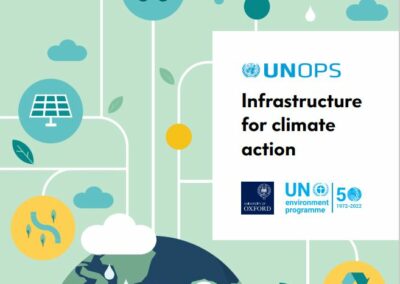‘Informative, unique and transferable’ – ITRC’s evidence-based infrastructure modelling provides innovative template for the ongoing development of the Arc.
On 6 October 2020, ITRC held their second webinar, this time examining ITRC’s role in Development Alternatives for the Oxford–Cambridge Arc. Chaired by Director Jim Hall, contributions from Dr Alistair Ford, Senior Lecturer in Geospatial Data at the University of Newcastle; Dr Simon Blainey, Associate Professor in Transportation at the University of Southampton; Alan Penn, Chief Scientific Advisor for the Minister of Housing, Communities and Local Government and Bev Hindle, Director of the Oxford–Cambridge Arc Leaders, prompted lively discussions amongst speakers and audience.
Jim introduced the session as a ‘deep dive’ into the analysis that ITRC has already done on Oxford–Cambridge Arc, and how that analysis is now informing new research into further possibilities and outcomes, across all infrastructure sectors. The challenge is complex – to develop a disconnected corridor through a combination of strategic infrastructure investment, housing development and urbanisation, into an area that is growing sustainably, includes significant green spaces and remains a sought-after place to live.
The first phase of ITRC’s investigations ended last year – with the Infrastructure Systems Analysis report for the OxCam Arc. But the future of the Arc is still being decided.
Alistair Ford presented an overview of current work funded by the Alan Turing Institute, which explores at fine detail a range of possible futures, bearing in mind competing pressures and objectives, attractors and constraints. Most pressing, perhaps, are the green/grey tensions – with more projected demand for housing in tension with the need to protect the area’s natural environment. He noted ‘NISMOD modelling allows us to compare scenarios and pull out metrics that allow us to assess impact objectively.’
England’s Economic Heartland’s Transport Strategy is aiming for a net-zero carbon transport system for the area by 2050, and Simon Blainey and his team are using the NISMOD transport model to assess the impacts for road traffic in particular of three possible ‘pathways’ to achieve this goal in the Pathways to Decarbonisation report. Their pioneering research has led to EEH adopting an approach which combines the increased use of digital communications and embedded technology in the transport network with policy-led behavioural shift.
Bev Hindle, Director of Arc Leaders, presented an ambitious, exciting vision for the Arc – based on the use of modelling – a ‘sustainable, inclusive, economically successful future based on evidence and using intelligence to our own advantage’. He noted the importance of convincing models, which give the ability to run different scenarios offering choice for an evidence-based infrastructure planning system.
Alan Penn, from the Ministry of Housing, Communities and Local Government, raised two discussion points – the first on validation. How certain can we be that the nature of forecast models is ‘sensitive’ enough to be fully effective in explaining the kinds of emergence (such as changes forced by the current Covid crisis) that take place in social and economic systems? His second point was about the geography of the Arc. All the current transport systems head for nearby London. Will the future Arc be a cohesive social and economic entity, or just another London suburb?
The last words came from Jim. Noting that the modelling comes partly from within the Arc itself – the universities, the Rutherford Appleton Laboratory in Harwell where the Data & Analytics Facility for National Infrastructure (DAFNI) is based – as well as universities outside the area, ‘this process is ongoing, a journey to invent a set of capabilities to inform decision making in this very complex place. It means producing work that’s informative, unique and transferable – using spatial data and analytics at the same time as the place is being created.’
Catch up with the webinar here:


